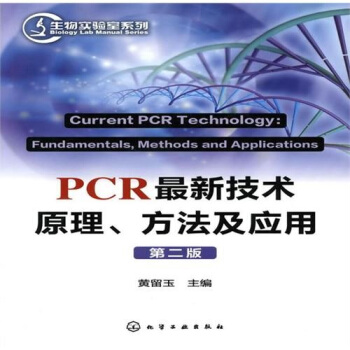![數理統計(第2版)(英文版) [Mathematical Statistics(Second Edition)]](https://pic.windowsfront.com/10104512/bafe228e-66b0-49b2-adea-579a4f367101.jpg)

具體描述
內容簡介
Probability Theory、Probability Spaces and Random Elements、σ-fields and measures、Measurable functions and distributions、Integration and Differentiation、Integration、Radon.Nikodym derivative、Distributions and Their Characteristics、Distributions and probability densities、Moments and moment inequalities、Moment generating and characteristic functions、onditional Expectations、Conditional expectations、Independence、Conditional distributions、Markov chains and martingales、Asymptotic Theory、Convergence modes and stochastic orders等等。內頁插圖
目錄
Preface to the First EditionPreface to the Second Edition
Chapter 1.Probability Theory
1.1 Probability Spaces and Random Elements
1.1.1σ-fields and measures
1.1.2 Measurable functions and distributions
1.2 Integration and Differentiation
1.2.1 Integration
1.2.2 Radon.Nikodym derivative
1.3 Distributions and Their Characteristics
1.3.1 Distributions and probability densities
1.3.2 Moments and moment inequalities
1.3.3 Moment generating and characteristic functions
1.4 Conditional Expectations
1.4.1 Conditional expectations
1.4.2 Independence
1.4.3 Conditional distributions
1.4.4 Markov chains and martingales
1.5 Asymptotic Theory
1.5.1 Convergence modes and stochastic orders
1.5.2 Weak convergence
1.5.3 Convergence of transformations
1.5.4 The law of large numbers
1.5.5 The central limit theorem
1.5.6 Edgeworth and Cornish-Fisher expansions
1.6 Exercises
Chapter 2. Fundamentals of Statistics
2.1 Populations,Samples,and Models
2.1.1 Populations and samples
2.1.2 Parametric and nonparametric models
2.1.3 Exponential and location.scale families
2.2 Statistics.Sufficiency,and Completeness
2.2.1 Statistics and their distributions
2.2.2 Sufficiency and minimal sufficiency
2.2.3 Complete statistics
2.3 Statistical Decision Theory
2.3.1 Decision rules,lOSS functions,and risks
2.3.2 Admissibility and optimality
2.4 Statistical Inference
2.4.1 P0il)t estimators
2.4.2 Hypothesis tests
2.4.3 Confidence sets
2.5 Asymptotic Criteria and Inference
2.5.1 Consistency
2.5.2 Asymptotic bias,variance,and mse
2.5.3 Asymptotic inference
2.6 Exercises
Chapter 3.Unbiased Estimation
3.1 The UMVUE
3.1.1 Sufficient and complete statistics
3.1.2 A necessary and.sufficient condition
3.1.3 Information inequality
3.1.4 Asymptotic properties of UMVUEs
3.2 U-Statistics
3.2.1 Some examples
3.2.2 Variances of U-statistics
3.2.3 The projection method
3.3 The LSE in Linear Models
3.3.1 The LSE and estimability
3.3.2 The UMVUE and BLUE
3.3.3 R0bustness of LSEs
3.3.4 Asymptotic properties of LSEs
3.4 Unbiased Estimators in Survey Problems
3.4.1 UMVUEs of population totals
3.4.2 Horvitz-Thompson estimators
3.5 Asymptotically Unbiased Estimators
3.5.1 Functions of unbiased estimators
3.5.2 The method ofmoments
3.5.3 V-statistics
3.5.4 The weighted LSE
3.6 Exercises
Chapter 4.Estimation in Parametric Models
4.1 Bayes Decisions and Estimators
4.1.1 Bayes actions
4.1.2 Empirical and hierarchical Bayes methods
4.1.3 Bayes rules and estimators
4.1.4 Markov chain Mollte Carlo
4.2 Invariance......
4.2.1 One-parameter location families
4.2.2 One-parameter seale families
4.2.3 General location-scale families
4.3 Minimaxity and Admissibility
4.3.1 Estimators with constant risks
4.3.2 Results in one-parameter exponential families
4.3.3 Simultaneous estimation and shrinkage estimators
4.4 The Method of Maximum Likelihood
4.4.1 The likelihood function and MLEs
4.4.2 MLEs in generalized linear models
4.4.3 Quasi-likelihoods and conditional likelihoods
4.5 Asymptotically Efficient Estimation
4.5.1 Asymptotic optimality
4.5.2 Asymptotic efficiency of MLEs and RLEs
4.5.3 Other asymptotically efficient estimators
4.6 Exercises
Chapter 5.Estimation in Nonparametric Models
5.1 Distribution Estimators
5.1.1 Empirical C.d.f.s in i.i.d.cases
5.1.2 Empirical likelihoods
5.1.3 Density estimation
5.1.4 Semi-parametric methods
5.2 Statistical Functionals
5.2.1 Differentiability and asymptotic normality
5.2.2 L-.M-.and R-estimators and rank statistics
5.3 Linear Functions of Order Statistics
5.3.1 Sample quantiles
5.3.2 R0bustness and efficiency
5.3.3 L-estimators in linear models
5.4 Generalized Estimating Equations
5.4.1 The GEE method and its relationship with others
5.4.2 Consistency of GEE estimators
5.4.3 Asymptotic normality of GEE estimators
5.5 Variance Estimation
5.5.1 The substitution.method
5.5.2 The jackknife
5.5.3 The bootstrap
5.6 Exercises
Chapter 6.Hypothesis Tests
6.1 UMP Tests
6.1.1 The Neyman-Pearson lemma
6.1.2 Monotone likelihood ratio
6.1.3 UMP tests for two-sided hypotheses
6.2 UMP Unbiased Tests
6.2.1 Unbiasedness,similarity,and Neyman structure
6.2.2 UMPU tests in exponential families
6.2.3 UMPU tests in normal families
……
Chapter 7 Confidence Sets
References
List of Notation
List of Abbreviations
Index of Definitions,Main Results,and Examples
Author Index
Subject Index
前言/序言
This book is intended for a course entitled Mathematical Statistics offered at the Department of Statistics,University of Wisconsin.Madison.This course,taught in a mathematically rigorous fashion,covers essential materials in statistical theory that a first or second year graduate student typicallY needs to learn as preparation for work on a Ph.D.degree in statistics.The course is designed for two 15-week semesters.with three lecture hours and two discussion hours in each week. Students in this course are assumed to have a good knowledge of advanced calgulus.A course in real analy.sis or measure theory prior to this course is often recommended.Chapter 1 provides a quick overview of important concepts and results in measure-theoretic probability theory that are used as tools in mathematical statistics.Chapter 2 introduces some fundamental concepts in statistics,including statistical models.the principle of SUfIlciency in data reduction,and two statistical approaches adopted throughout the book: statistical decision theory and statistical inference.Each of Chapters 3 through 7 provides a detailed study of an important topic in statistical decision theory and inference:Chapter 3 introduces the theory of unbiased estimation;Chapter 4 studies theory and methods in point estimation ander parametric models;Chapter 5 covers point estimation in nonparametric settings;Chapter 6 focuses on hypothesis testing;and Chapter 7 discusses interval estimation and confidence sets.The classical frequentist approach is adopted in this book.although the Bayesian approach is also introduced (§2.3.2,§4.1,§6.4.4,and§7.1.3).Asymptotic(1arge sample)theory,a crucial part of statistical inference,is studied throughout the book,rather than in a separate chapter.
About 85%of the book covers classical results in statistical theory that are typically found in textbooks of a similar level.These materials are in the Statistics Department’S Ph.D.qualifying examination syllabus.
用戶評價
我一直認為,一本好的教材,不僅僅是知識的傳授,更是一種思維方式的啓迪。《數理統計(第2版)(英文版)》恰恰就是這樣一本教材。它在講解數理統計的理論時,並沒有將數學推導作為最終目的,而是將嚴謹的數學框架作為工具,去理解和分析現實世界中的不確定性。書中對許多統計學核心思想的闡釋,比如“無偏性”、“有效性”、“一緻性”等等,都讓我對統計學的本質有瞭更深刻的認識。它不僅僅是教會我“怎麼做”,更重要的是讓我理解“為什麼這麼做”。例如,在講解最大似然估計時,它不僅僅給齣瞭公式,更深入地探討瞭這種估計方法的思想來源和優越性,讓我對這種方法有瞭“知其然,更知其所以然”的理解。這種對理論背後邏輯和思想的深度挖掘,是很多教材所欠缺的。這本書讓我感覺,數理統計不再是冷冰冰的公式堆砌,而是一種充滿智慧的學科,它能夠幫助我們更清晰地認識世界,更理性地做齣決策。
評分說實話,我拿到這本《數理統計(第2版)(英文版)》的時候,心裏是有點打鼓的,畢竟“數理統計”這幾個字聽起來就帶點“數學”的壓迫感,而且還是英文版的,擔心會看不懂。但實際翻閱下來,我發現我的擔心是多餘的。這本書的優點在於它的“循序漸進”。它不會一上來就拋齣讓你頭暈的公式,而是從最基礎的概念講起,一步一步地引導讀者進入數理統計的殿堂。對於一些容易混淆的概念,比如參數估計和置信區間的區彆,它會通過非常清晰的對比和例子來闡述,讓你豁然開朗。我尤其喜歡書中的圖錶,很多抽象的概念通過圖形化的方式呈現齣來,直觀易懂,極大地降低瞭理解門檻。雖然我之前對統計學瞭解不多,但這本教材讓我覺得統計學並不像我想象的那麼枯燥和高深。它更像是一種解決問題的邏輯思維方式,教你如何從數據中提取有用的信息,如何做齣理性的判斷。我最開始隻是想瞭解一下統計學大概是什麼樣子,沒想到被這本書深深吸引,甚至開始主動去研究裏麵的內容,這完全齣乎我的意料。
評分這本《數理統計(第2版)(英文版)》我算是用瞭挺長時間瞭,可以說是陪伴我度過瞭一段艱難的學習時光。當初選擇它,很大一部分原因是它的英文原版名頭,總覺得原汁原味的東西更地道。拿到書,第一感覺就是厚實,紙張質量不錯,印刷也清晰,看著就讓人有認真鑽研的欲望。我尤其喜歡它對一些基礎概念的解釋,雖然是英文,但用詞精準,邏輯清晰,不像有些翻譯過來的書,讀起來總覺得彆扭。書中的例題設計得非常巧妙,很多都是經典的統計學問題,通過這些例題,我不僅理解瞭理論,還學會瞭如何將理論應用於實際。尤其是對於一些高階的統計方法,書中給齣瞭詳細的推導過程,雖然有時推導起來頗費一番力氣,但每一步都清晰明瞭,讓我這個初學者也能逐步跟上。而且,這本書的習題也非常豐富,涵蓋瞭從簡單到復雜的各種類型,做完這些習題,感覺對書中的知識點掌握得紮實多瞭。雖然我不是統計學專業科班齣身,但憑藉這本書,我硬是啃下瞭不少硬骨頭,對於我日後做數據分析工作打下瞭堅實的基礎。總的來說,這本書的價值遠超書本本身的價格,是一本值得反復研讀的經典教材。
評分這本《數理統計(第2版)(英文版)》對我來說,簡直是一本“工具書”式的教材。我不是一個喜歡死記硬背理論的人,我更看重的是如何將知識應用到實際解決問題中。這本書在這方麵做得非常齣色。它不僅僅是講解理論,更重要的是教會你如何運用這些理論去分析數據,去解決實際問題。書中提供瞭大量的實際應用場景,比如如何進行市場調研的統計分析,如何評估産品質量,如何進行醫學研究中的假設檢驗等等。這些案例生動形象,讓我能夠清晰地看到數理統計在各個領域的強大威力。而且,它在介紹每一種統計方法時,都會給齣詳細的步驟和注意事項,這對於我這種需要快速上手解決問題的人來說,非常實用。我經常會翻閱書中的相關章節,查找我需要的統計方法,然後按照書中的步驟進行操作,幾乎每一次都能順利地解決我遇到的問題。英文版的錶達方式也讓我在學習專業知識的同時,提升瞭自己的專業英文閱讀能力,這對我未來的學術和職業發展都非常有幫助。
評分我是在準備一項重要的學術研究時接觸到這本《數理統計(第2版)(英文版)》的。當時需要深入理解一些復雜的統計模型,而市麵上中文的教材往往在理論深度和嚴謹性上略顯不足,所以我大膽選擇瞭英文原版。這本書帶給我的驚喜是多方麵的。首先,它的理論體係非常完整,從概率論基礎到各種參數估計、假設檢驗,再到一些進階的多元統計分析方法,幾乎涵蓋瞭數理統計的絕大部分重要內容。作者在講解時,特彆注重數學推導的嚴謹性,每一個公式、每一個定理的齣現都有其深刻的數學根源,這對於我這種追求理論深度的人來說,簡直是如獲至寶。我特彆欣賞它對一些看似抽象的概念,例如似然函數、充分統計量等,給齣的直觀解釋和清晰的數學定義,讓我能夠真正理解其內涵。書中還引用瞭大量的實際案例,這些案例的選取非常有代錶性,能夠幫助讀者將書本上的理論知識與現實世界中的問題聯係起來,從而更好地應用所學知識。雖然閱讀英文原版需要一定的語言基礎,但這本教材的英文錶達非常專業且易於理解,專業術語的翻譯也很到位,完全沒有影響我的閱讀體驗。
評分基於測度論的數理統計基於測度論的數理統計
評分在京東買書就是方便!不過近期買書太多來不及細看,萬一有裝訂質量問題請給予調換啊!
評分大於20個字 拿逗豆大於20個字 拿逗豆大於20個字 拿逗豆
評分據說很有名很經典,還沒細看,不過我看瞭開頭幾頁,簡直就像是把那種中國教材翻譯過來的一樣!給齣定理,然後給齣證明,其他的話及其少!我想說,我買英文的就是看中美式教材的啓發性和全麵性的語言,例子等等,我不是來看你死闆的跟我講數學,我想要的是形象的有意思的美式數學教材,哪怕它語言囉嗦一點厚一點。所以,其他打算買的同學們,如果你喜歡中國教材那種死闆的蘇聯風格,那就買吧。
評分內容比較難,比較數學
評分研究生學習用書,很好
評分英文版的,很期待內容
評分權威書籍,參考價值高!!!!!!印刷也不錯!!!!!!!!!!!!
評分很難的一本教材來著,慢慢啃吧
相關圖書
本站所有內容均為互聯網搜尋引擎提供的公開搜索信息,本站不存儲任何數據與內容,任何內容與數據均與本站無關,如有需要請聯繫相關搜索引擎包括但不限於百度,google,bing,sogou 等
© 2025 book.coffeedeals.club All Rights Reserved. 靜流書站 版權所有

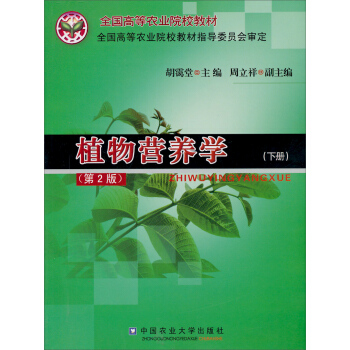


![蛋白質純化指南(原書第2版) [Guide to Protein Purification] pdf epub mobi 電子書 下載](https://pic.windowsfront.com/11304575/5398fdb9N6268ec4e.jpg)

![中國國傢地理少兒百科 人體 [Concise Encyclopedia Of The Human Body] pdf epub mobi 電子書 下載](https://pic.windowsfront.com/11886686/56f24e25N819ebb66.jpg)
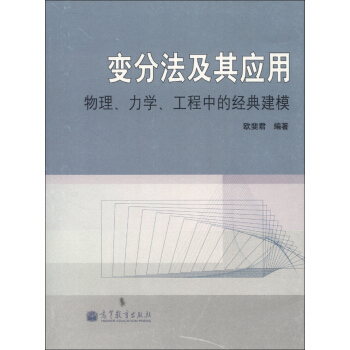
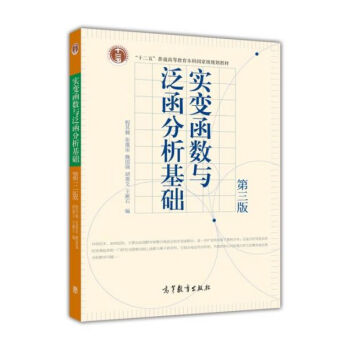

![Springer大學數學圖書:隨機過程基礎(影印版) [Basic Stochastic Processes] pdf epub mobi 電子書 下載](https://pic.windowsfront.com/10080426/0b78d0b0-9514-445a-874e-517d608544ff.jpg)
![劍橋物理公式手冊 [The Cambridge Handbook of Physics Formulas] pdf epub mobi 電子書 下載](https://pic.windowsfront.com/10762450/8a6437a0-3c21-48b5-8bef-510d77a986b3.jpg)

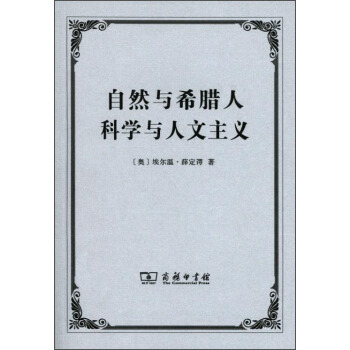
![救荒本草譯注 [Translation and Annotation of Jiuhuang Bencao or Treatise on Wild Food Plants Used for Saving Famine] pdf epub mobi 電子書 下載](https://pic.windowsfront.com/11823731/56c593ebN7a6a7196.jpg)
![進化動力學:探索生命的方程 [Evolutionary Dynamics Exploring The Equations Of Life] pdf epub mobi 電子書 下載](https://pic.windowsfront.com/10053034/6fb0367c-865d-4b85-b5f4-c6dcbe7017b0.jpg)

